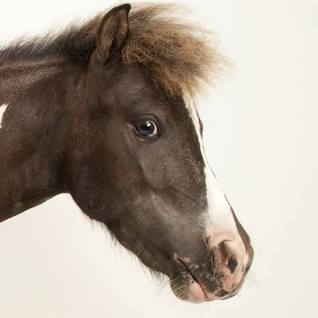Birds display fear by pulling their feathers close to their bodies or raising their crests. They may also spread their wings close to the ground, stand in a corner, rock from side to side, or hiss with their necks out when extremely frightened.
Birds use these behaviors as a way to communicate stress and fear. In some cases, birds may create a distraction to lure predators away from their eggs or young offspring. To calm a scared bird, it is important not to yell at or agitate them further.
Moving slowly, providing stimulation, and giving them out-of-cage time can help alleviate their stress. Overall, birds have unique ways of expressing fear and protecting themselves in response to perceived threats.
Understanding Bird Behavior When Scared
Birds respond to fear by pulling their feathers close to their bodies, raising their crests, spreading their wings close to the ground, or rocking from side to side. Some birds may also create distractions or exhibit aggressive behaviors when scared.
Understanding bird behavior when scared can help calm them and minimize stress.
When birds find themselves in a state of fear or distress, they exhibit various behaviors to communicate their discomfort. Understanding how birds express fear through body language and the role of their feathers in this process can help us recognize and respond to their needs.
Let's delve deeper into this topic:
Fear As A Natural Response
- Birds show fear as a natural response to perceived threats or stressors.
- Feathered friends may tense up and pull their feathers close to their bodies.
- Showy birds like cockatiels may raise their crests or spread out their wings close to the ground.
- Some birds rock from side to side or stand in a corner when scared.
- Extremely frightened birds may even extend their neck and hiss as a way of threatening.
How Birds Show Fear Through Body Language
Birds use their body language to convey their emotions, including fear. Here are some common behaviors they display:
- Feather pecking: In an anxious state, some birds may start pecking at their own feathers or those of their companions.
- Screaming: When birds feel scared, they may vocalize their distress through loud screams or calls.
- Flapping wings: In an attempt to release tension or express unease, birds might start flapping their wings vigorously.
- Luring predators away: Birds that feel threatened may create a diversion away from their nests or young offspring to protect them.
The Role Of Feathers In Expressing Fear
Feathers play a significant role in an avian's ability to communicate fear effectively. Here's how feathers contribute to expressing fear:
- Close to the body: When scared, birds tend to keep their feathers close to their bodies, creating a streamlined appearance.
- Raised crests: Certain bird species, like cockatiels, raise their crests to intimidate potential threats and signal their fear.
- Ruffled feathers: An agitated or frightened bird may ruffle its feathers to appear larger and more intimidating.
- Piloerection: This term refers to when birds fluff up their feathers, increasing their insulation and making them look more imposing.
Understanding bird behavior when scared allows us to create a safe and comforting environment for our feathered friends. By recognizing these signs, we can respond appropriately and help alleviate their fear and stress. Remember to approach scared birds with patience, gentleness, and a calm demeanor to establish trust and provide reassurance.
Stress-Induced Behaviors In Scared Birds
Fear and stress in birds can manifest in various ways. They may pull their feathers close to their bodies, raise their crests, spread out their wings, rock from side to side, or even exhibit aggressive behavior like hissing. Understanding these stress-induced behaviors can help bird owners effectively calm their scared feathered friends.
:
Birds, just like humans, can experience fear and stress in various situations. These stress-induced behaviors serve as signals of their discomfort or unease. Understanding these behaviors can help us recognize when birds are scared and take necessary steps to calm them.
Let's explore two common stress-induced behaviors in scared birds:
Feather Pecking And Self-Destructive Behaviors:
Stress can cause birds to engage in self-destructive behaviors such as feather pecking. Here are some key points to note:
- Feather pecking: When birds are scared, they may resort to pecking at their own feathers excessively. This behavior can lead to feather damage, bare patches, and even skin injuries.
- Self-destructive behaviors: In extreme cases, scared birds may exhibit self-injurious behaviors like feather plucking, head-banging, or picking at their own skin. These behaviors can be harmful and may require intervention from a veterinarian or avian behaviorist.
Screaming And Vocalizations:
Scared birds often resort to vocalizations as a way to express their fear and seek attention. Here are some notable points:
- Loud screaming: When birds are frightened, they may emit loud and high-pitched screams. This can be alarming and may indicate their distress or discomfort.
- Alarm calls: Birds may also use specific vocalizations known as alarm calls to alert other birds of potential danger. These calls can help to mobilize a flock's response to a perceived threat.
Wing Flapping And Aggressive Movements:
Scared birds may also exhibit wing flapping and aggressive movements as a response to fear. Here are some key points to consider:
- Wing flapping: Birds may frantically flap their wings when they feel threatened, signaling their distress and discomfort.
- Aggressive movements: Some scared birds may adopt aggressive postures or make abrupt movements, such as lunging or pecking, to ward off perceived threats. These behaviors are defensive in nature and intended to protect themselves from harm.
By understanding these stress-induced behaviors, bird owners can better assess the well-being of their feathered companions and implement appropriate measures to alleviate their fear and stress. Remember, a calm and safe environment is essential for the overall health and happiness of our avian friends.
Protective Reactions Of Scared Birds
Birds have protective reactions when they are scared, such as pulling their feathers close to their bodies, putting up their crests, or rocking from side to side. They may also create distractions or exhibit aggressive behaviors to ward off potential threats.
When it comes to birds, fear triggers a variety of protective reactions. Understanding how birds behave when scared can help us better interact with and care for them. In this section, we will explore the protective reactions of scared birds.
Creating Distractions To Lure Predators Away:
- Birds may employ a tactic of creating distractions to lure predators away from their nest or young offspring. By engaging in a specific behavior or vocalization, birds divert the attention of potential threats, ensuring the safety of their vulnerable offspring.
- This protective reaction is an effective survival strategy, as predators are drawn away from the nest, reducing the risk of harm to the eggs or chicks.
Hiding In Corners Or Seeking Shelter:
- When faced with fear, birds will often seek refuge in corners or any available shelter. They instinctively understand that by finding a confined space, they can minimize their exposure to potential dangers.
- This behavior allows birds to hide from predators and seek protection in a secure and secluded environment, reducing their vulnerability.
Threatening Gestures And Vocalizations:
- In their attempt to ward off perceived threats, scared birds may exhibit threatening gestures and vocalizations. These actions are meant to intimidate and deter potential predators, signaling that the bird is prepared to defend itself.
- Birds may make threatening gestures by expanding their wings, puffing up their feathers, or hissing. Vocalizations can include screeching, shrieking, or making loud warning calls to communicate their fear and alert nearby individuals.
Understanding these protective reactions of scared birds can help us provide appropriate care and minimize stress in our avian companions. By creating a safe and secure environment, we can ensure their well-being and build a trusting bond based on understanding and respect.

Credit: www.imdb.com
Frequently Asked Questions On What Do Birds Do When They Are Scared
How Do Birds React When Scared?
Birds react to fear by pulling their feathers close to their bodies, raising their crests, spreading their wings, rocking from side to side, or creating distractions to lure predators away.
How Do Birds Express Fear?
Birds express fear by pulling their feathers close to their bodies, raising their crests, spreading their wings, rocking from side to side, or creating distractions to protect their eggs.
What Changes When The Bird Is Scared?
When scared, birds pull their feathers close to their bodies, raise their crests, and may rock or huddle in a corner.
How Do You Calm A Scared Bird?
To calm a scared bird: - Don't yell or make sudden movements. - Move slowly to avoid agitating the bird further. - Train the bird using positive reinforcement. - Provide stimulation and out-of-cage time for mental and physical well-being.
Conclusion
When birds are scared, they exhibit various behaviors to communicate their fear. One common behavior is to pull their feathers close to their bodies. Showy birds like cockatiels may put their crests up or spread out their wings close to the ground.
Additionally, some birds may stand in a corner and rock from side to side. When birds are afraid for their offspring, they may create a distraction away from the nest to lure the predator away. Other fearful behaviors include feather pecking, screaming, and flapping their wings.
It's important for bird owners to understand these signs of fear and to provide a calm and safe environment for their feathered friends. When interacting with a scared bird, it is crucial to remain calm, move slowly, and avoid yelling or sudden movements.
Providing stimulation and out of cage time can also help alleviate stress. Remember, birds are sensitive creatures and it's our responsibility to ensure their well-being.








